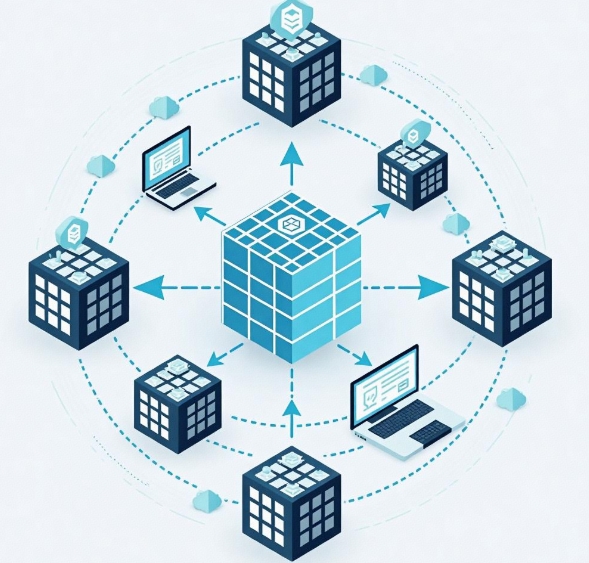Smart Contract Lifecycle Management in DApp Development
- latest articles
- 1.DApp Development & Customization: Merging Diverse Market Needs with User Experience 2.Analysis of the Core Technical System in DApp Project Development 3.How to achieve cross-chain interoperability in Web3 projects? 4.How does the tokenization of points reconstruct the e-commerce ecosystem? 5.How to Set and Track Data Metrics for a Points Mall? 6.What is DApp Development? Core Concepts and Technical Analysis 7.Inventory of commonly used Web3 development tools and usage tips 8.Development of a Distribution System Integrated with Social E-commerce 9.Six Key Steps for Businesses to Build a Points Mall System 10.What is DApp Development? A Comprehensive Guide from Concept to Implementation
- Popular Articles
- 1.Future Trends and Technology Predictions for APP Development in 2025 2.Analysis of the DeFi Ecosystem: How Developers Can Participate in Decentralized Finance Innovation 3.From Zero to One: How PI Mall Revolutionizes the Traditional E-commerce Model 4.DAPP Development | Best Practices for Professional Customization and Rapid Launch 5.Recommended by the Web3 developer community: the most noteworthy forums and resources 6.From Cloud Computing to Computing Power Leasing: Building a Flexible and Scalable Computing Resource Platform 7.How to Develop a Successful Douyin Mini Program: Technical Architecture and Best Practices 8.Shared Bike System APP: The Convenient Choice in the Era of Smart Travel 9.How to Create a Successful Dating App: From Needs Analysis to User Experience Design 10.From Design to Development: The Complete Process of Bringing an APP Idea to Life
With the continuous development of blockchain technology, decentralized applications (DApps) have gradually become an important component of the blockchain field. The core of DApps typically relies on smart contracts to implement decentralized application logic and transaction rules. As a key component of DApps, the effectiveness of smart contract development and management directly impacts the stability and security of the entire DApp. However, smart contracts are not a one-time solution after development; their lifecycle management has become a critical focus for blockchain developers and project teams.
This article will delve into the lifecycle management of smart contracts during DApp development, detailing the management methods and challenges involved in writing, testing, deploying, upgrading, and maintaining smart contracts.
I. Overview of Smart Contracts
Smart contracts are programs deployed on a blockchain network, whose operation and execution depend on the blockchain's consensus mechanism. Smart contracts automatically execute agreed-upon transactions or protocols through code, ensuring trust and transparency between parties without the need for third-party intermediaries. Typically, smart contracts are used to automate transactions, verify transactions, issue assets, and more, making them essential for implementing decentralized applications in blockchain technology.
In DApp development, smart contracts serve as the "business logic," typically executing all operations within the application in an automated and trustless manner. The lifecycle management of smart contracts ensures their effectiveness, reliability, and security throughout their usage.
II. The Lifecycle of Smart Contracts
The lifecycle of a smart contract can be divided into several key stages, each of which plays a crucial role in the overall functionality and security of the DApp. These stages include writing, testing, deploying, upgrading, and maintaining smart contracts.
1. Writing Smart Contracts
Writing smart contracts is the starting point of the entire lifecycle. Developers use smart contract programming languages such as Solidity or Vyper to write the business logic of the contract based on the DApp's requirements. The goal of this stage is to ensure the contract is fully functional, easy to understand, and free of vulnerabilities.
Key Considerations:
Clear Functionality: The contract's functions must be clearly defined according to the requirements document to avoid repeated modifications later.
Code Auditing: Since smart contracts cannot be changed once deployed on the blockchain, code auditing is crucial. Auditing helps identify potential security risks early.
Code Optimization: Smart contract code should be as concise and efficient as possible, avoiding unnecessary complexity to reduce execution costs (e.g., gas fees).
2. Testing Smart Contracts
After writing the smart contract, testing is essential. Pre-deployment testing of smart contracts primarily includes functional testing and security testing to ensure the contract operates as expected and has no potential vulnerabilities or security risks.
Key Considerations:
Unit Testing: Test each function and module of the contract to ensure they operate as expected.
Integration Testing: Test interactions between different contract modules to ensure seamless integration of the overall system.
Security Testing: Since smart contracts cannot be modified once deployed, security testing is particularly important. Common attacks such as reentrancy and integer overflow should be avoided.
3. Deploying Smart Contracts
After rigorous testing, smart contracts can be deployed to the blockchain network. During deployment, it is necessary to choose a suitable blockchain platform, such as Ethereum, BSC, or Solana. Deploying a contract typically requires paying a certain amount of gas fees.
Key Considerations:
Testnet vs. Mainnet: Before deploying a smart contract to the mainnet, it is recommended to deploy it on a testnet first to ensure its stability in a real environment.
Contract Address Management: After deployment, the contract generates a unique address, which will be used for subsequent interactions and calls, making address management particularly important.
4. Upgrading Smart Contracts
Once deployed on the blockchain, smart contracts are difficult to modify. While this immutability ensures security and transparency, it also poses challenges for upgrades and fixes.
Key Challenge: How to upgrade the contract without affecting existing users.
Common smart contract upgrade strategies include:
Proxy Pattern: Implement contract upgrades through a proxy contract. When an upgrade is needed, only the target address of the proxy contract needs to be replaced.
Upgradable Contract Frameworks (e.g., OpenZeppelin): Open-source frameworks like OpenZeppelin provide standardized solutions for contract upgrades, making it easier for developers to implement them.
5. Maintaining Smart Contracts
Maintaining smart contracts is not only about upgrades but also involves promptly fixing potential vulnerabilities and issues during daily operations. This requires the development team to continuously monitor the contract's performance and perform necessary repairs.
Key Considerations:
Monitoring and Logging: Use monitoring tools to track contract transactions and execution status in real-time. Logging helps developers identify and fix issues promptly.
Regular Security Audits: As attack techniques evolve, new security vulnerabilities may emerge during the use of smart contracts. Regular code audits are essential to ensure security.
III. Challenges in Smart Contract Lifecycle Management
Smart contract lifecycle management is not just a technical issue; it also involves challenges in multiple areas:
1. Security Issues
The security of smart contracts has always been a pain point in the blockchain field. Since contract code cannot be modified once deployed, any vulnerability can lead to significant financial losses. Therefore, security audits and vulnerability detection are particularly important.
2. Upgrade Challenges
Once deployed, smart contracts cannot be directly modified. Although methods like the proxy pattern enable upgrades, these solutions also face complexity and security issues, requiring the development team to have sufficient technical expertise.
3. Legal and Compliance Issues
Smart contract applications may involve legal and compliance issues. For example, smart contracts may handle user data and privacy protection during execution, making it essential to address compliance issues and ensure adherence to relevant laws and regulations.
4. User Experience
Despite the advantages of decentralization and trustlessness in blockchain technology, user experience remains a challenge. The complexity of smart contracts may confuse average users, so DApp designs need to simplify user interactions, making them more intuitive and user-friendly.
IV. Conclusion
The lifecycle management of smart contracts is crucial to the success of DApps. Through effective lifecycle management, smart contracts can ensure functionality while minimizing security risks and providing users with stable and reliable services. As blockchain technology continues to advance, we can foresee that smart contract lifecycle management will receive increasing attention from developers and enterprises, and related tools and frameworks will continue to mature, bringing more convenience to DApp development.
-

DApp Development & Customization: Merging Diverse Market Needs with User Experience
As blockchain technology matures and becomes more widespread, decentralized appl···
-

Analysis of the Core Technical System in DApp Project Development
With the rapid development of blockchain technology, decentralized applications ···
-

What is DApp Development? Core Concepts and Technical Analysis
With the rapid development of blockchain technology, decentralized applications ···

 Blockchain
Blockchain












